Framing in Photography: Simple Tips To Frame the Subject
Framing in photography is a composition technique that is an essential photography skill to learn as a beginner photographer. You can use framing in portrait, landscape, city, or any other type of photography to give extra symmetry to the image.
Did you know that there are so many photographic framing variations? It can be trees, flowers, buildings, arches, stairs, or even traffic.
The goal of this article is to give you value! After reading this I guarantee, you will be more aware of different types of framing techniques in photography, and on the next shooting, you will easily find different opportunities to frame the subject.
What is Framing in Photography?

What is framing in photography?
Framing for photography is one of the easiest composition techniques to draw attention to the point. Is your main subject a person in portrait photography or a mountain in landscape photography? Any frame in a photo will make the subject stand out.
How do frames work?
Simply by blocking some parts of the image in a way that it will glaze the viewer’s focus on the main subject. It can be a window frame on all sides, natural frames like bush leaves, architectural frames like skyscrapers on sides, different lights, and shadows, or resolving a frame using model hands.
As you see there are a variety of options to make your images more engaging for viewers with simple framing photography techniques. But why is framing important in photography?
What does Framing in Photography give?
As already mentioned then the main intention of framing in photography is to draw a focus on the subject. But that’s not the only reason. There are other several benefits that framing in photography gives.
1. Leading Attention to the Image
Leading attention to the image is one of the most beneficial things that framing the subject gives. There are two main reasons why framing is often used.
First, it will lead viewers to focus on the right subject.
Secondly, viewers’ attention stays on the point longer! The reason for that is simple. Everything else apart from the subject looks unattractive.
2. Balancing the Photo
There are two known terms in photography to balance a photo: positive and negative space. While positive space includes the subject, then negative space is all the stuff that is around the subject.
Framing in photography helps you to minimize the attention from the surrounding (negative space) and on the other hand, makes it possible to let the subject stand out (positive space). An easy way to balance a photo!
3. Brings Out Details
Framing a subject also brings out more details. As previously mentioned, negative space is unattractive, it simply gives more contrast to the subject itself. The most used technique in composition photography is to bring out details by exploiting shallow depth of field.
On that occasion framing photography technique would be to use a wider aperture to set focus on the main subject. That way it brings out extra details.
4. More Depth to the Picture
Another bit more advanced benefit what framing in photography gives is a three dimensional view. Usually, photos look like a flat and therefore can’t tell how far some objects are.
However, with framing, you can add some layers in the foreground and background that make the three dimensional feeling. With layers, it gives more depth to the image throughout the photo.
Framing in Photography Examples
If you think about framing in photography, it’s not done by just fitting a subject in an obvious frame (like a picture frame). You can go creative with different environmental, architectural, natural, lights, or even frame a subject with model hands. Here are some photography framing examples.
1. Environmental Frames
You can use a great variety of environmental elements for framing in photography. Just look around the area, if there is something to use as a frame.
For example, in city photography, you can use traffic (cars and people) as framing. In that instance, you need a slower shutter speed to capture traffic in motion blur, while the main subject has to stay still for sharp quality. It also can be used when traffic and the main framed subject are in contrast.
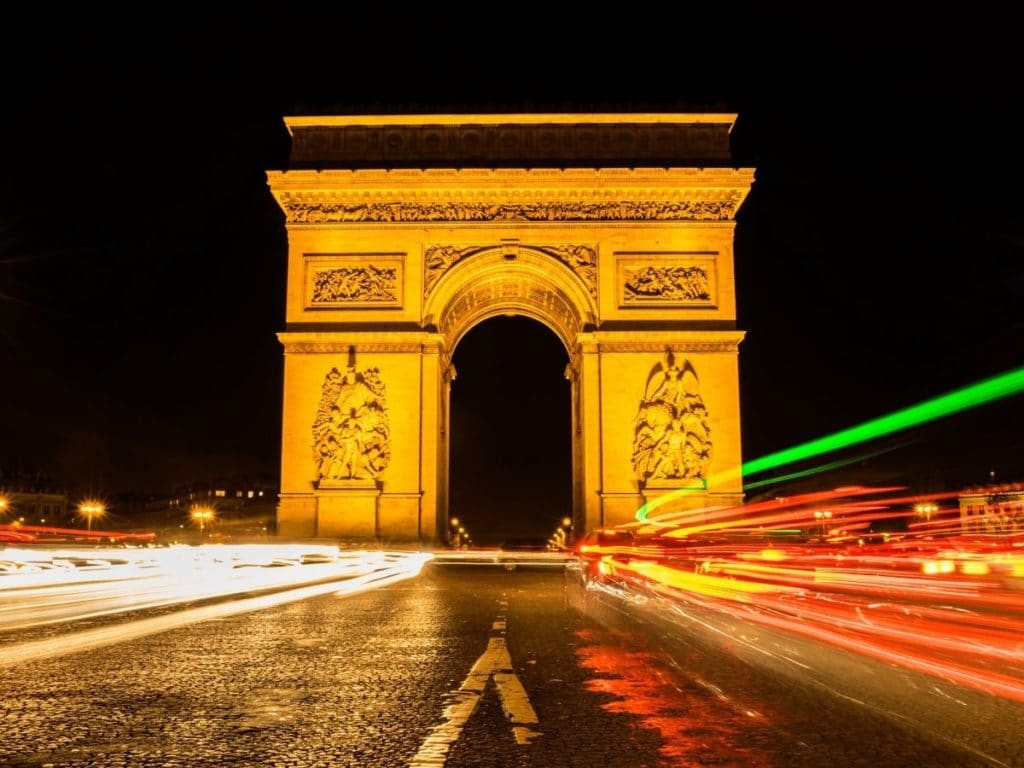
Framing with traffic in motion blur
Another easy and effective example is using curtains. In this portrait composition technique, you need to position your model between the curtains. These will work as frames and your model will stand out easily.
2. Natural Frames

Natural frames
Natural frames are widely used in landscape composition techniques. Everything that has been found from nature can be used to frame a photo. For example the alley of trees, photos taken from caves, flowers with the same color, or mountains.
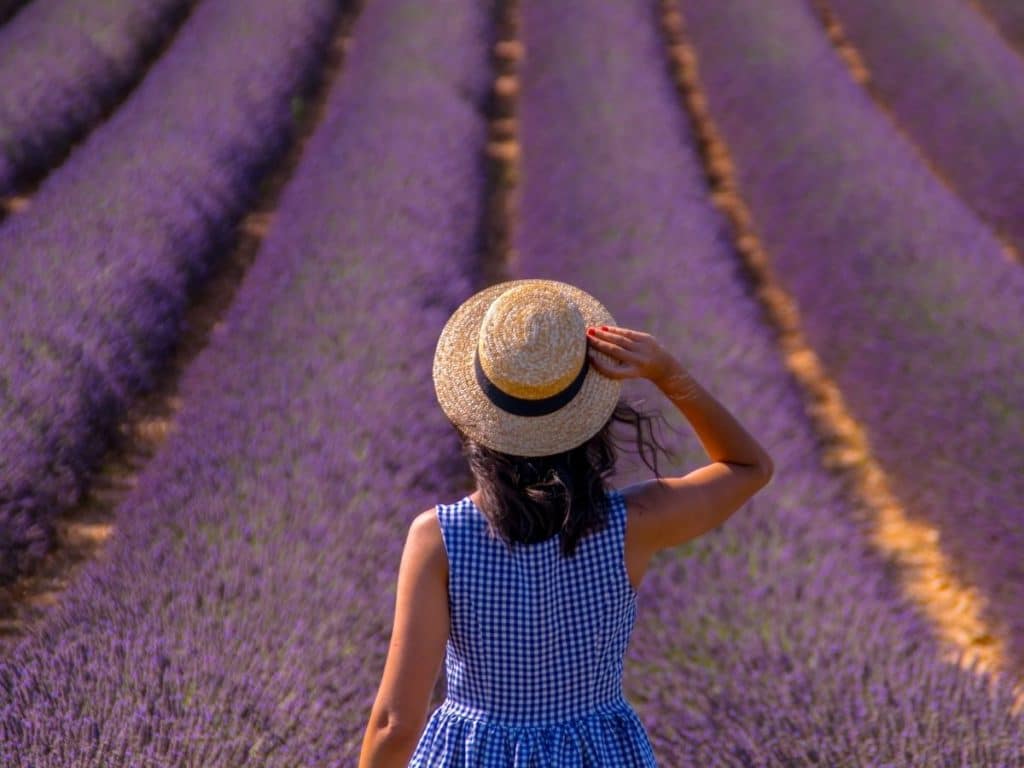
Fields as a natural frames
Also, it’s widely used as a framing element in portrait composition. For example, a model peeps from leaves, standing between Instagram famous lavender fields, or with other natural frames that are also used in summer photography.
3. Architectural Frames

Architectural frames
As there are framing options in nature, there are also alternatives in different construction elements like buildings, bridges, columns, stairs, arches, and so on.
For example, a popular framing composition in photography is to use bridges. There you have to place your subject between the edges of bridges. Mostly used in portrait photography.
A great composition technique to use everywhere as framing is an alley of something. It can be a straight alley of buildings, columns, statues. You just need to position your subject between the alleys to make it stand out.
4. Lights and Shadow

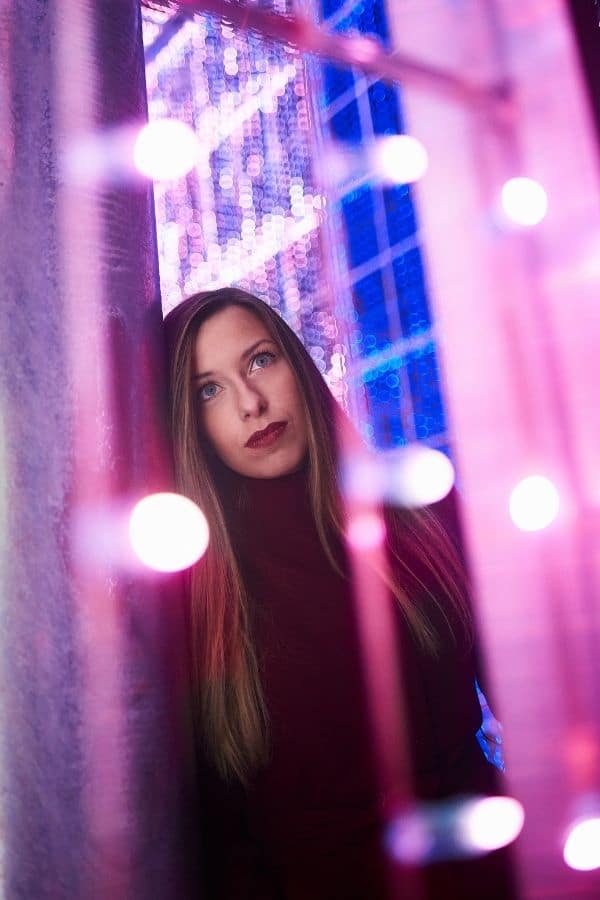
You don’t need exactly solid elements when framing a photograph. Playing with the lights and shadows can also have a great effect on images when thinking about framing in photography.
The easiest way to use lights in a photo is in street or night photography. For example, using a street light bulb to frame a photo.
Framing with bokeh is increasing in popularity fast. Where background or foreground lighting leads to the subject with shallow depth of field.
The same framing effect works with shadows. For example, using it during the daylight under the roof. Just have to position your model in a lighted area and the background is in a darker shade.
5. Door and Window Frame

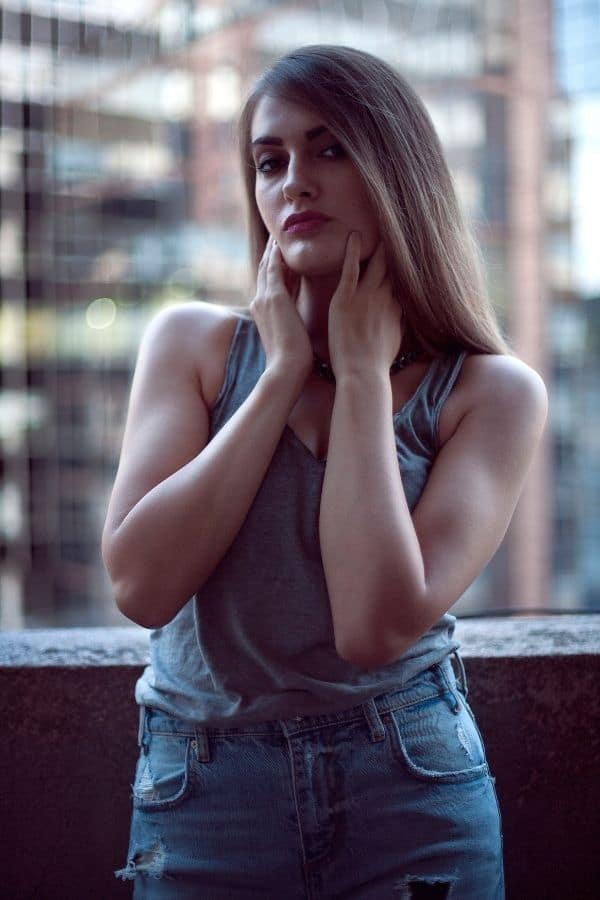
You can also categorize them under the architectural frames, but these are the most obvious frames to use in photos. The viewer’s focus is easily drawn to the image when shooting with door and window frames.
It’s mostly used in portrait composition, but you can experiment with different other variations. For example, shooting a scenic landscape photo from a tent door frame.

Door frame
Keep in mind that the subject doesn’t certainly need to be inclined with a frame. It can be in the background or swallowed in the foreground. Both ways work great when using that framing in photography.
6. Framing with Hands

Framing with hands
If you don’t have any framing elements then another creative way to draw a focus on the point is that the photographer frames the subject themselves.
For example when shooting an object you can just create a frame with your hands. Simply put the camera on a timer, setting up the frame, and waiting for the click.
In portrait photography, you can ask a model to frame with their own hands. Works effectively when you want to get more focus on the face.
Conclusion
Keep in mind these framing in photography techniques and it will give you another extra option to compose your captures in the next shooting in a new different way. These framing tips are super easy to apply because now you know that there are so many elements you can use to frame a subject. Try these framing techniques and keep practicing!
PIN IT
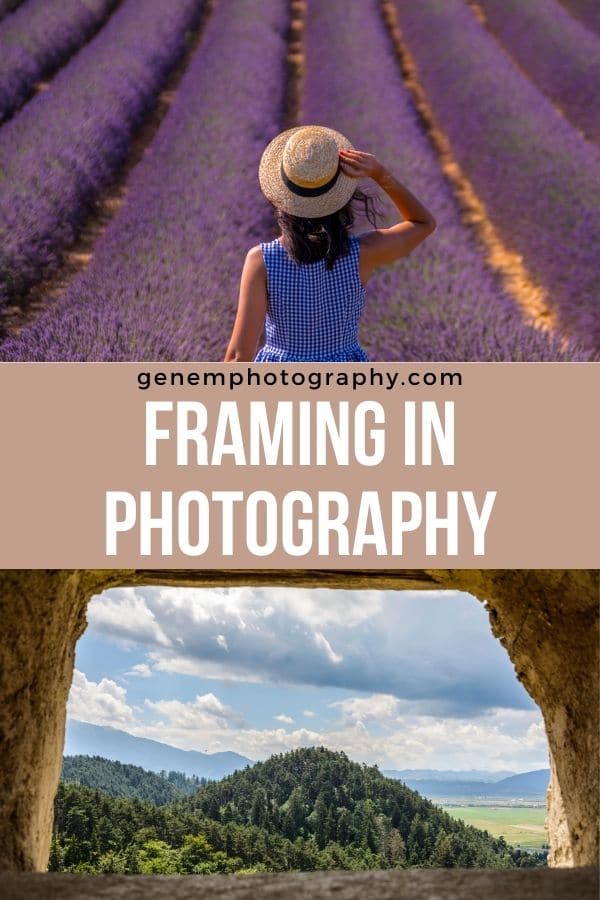

Recent Posts about Photography:















![Toni Kroos là ai? [ sự thật về tiểu sử đầy đủ Toni Kroos ]](https://evbn.org/wp-content/uploads/New-Project-6635-1671934592.jpg)


